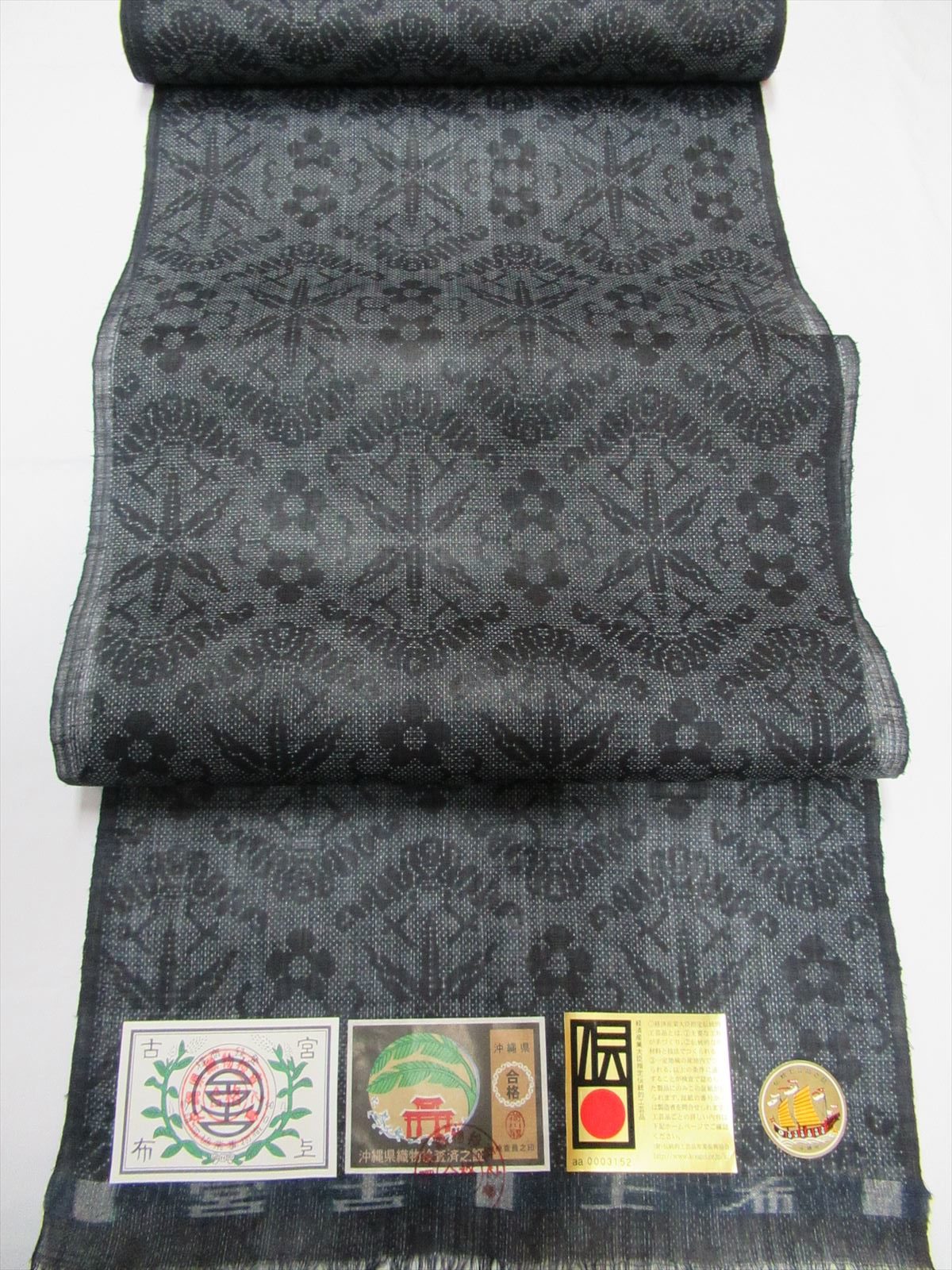宮古上布
読み・Pronunciation: Miyako-jōfu
Production Area: Miyako Island, Okinawa Prefecture
Miyako-jōfu, produced on Miyako Island, is regarded as one of Japan’s finest hemp textiles, alongside Echigo-jōfu and Ōmi-jōfu, and is counted among the nation’s “Three Great Jōfu.” Its characteristic ground color is deep navy, patterned with indigo or white motifs. The fabric’s unique glossy, smooth finish—resembling the effect of wax—is achieved through kinuta-uchi, a process of pounding the cloth evenly with a wooden mallet. The origin of Miyako-jōfu dates back to 1583, when a Ryukyuan tribute ship was struck by a typhoon. A Miyako islander named Manai Suganma Yunchu heroically dove into the raging sea to repair the vessel, saving all aboard. In gratitude, the Ryukyu king appointed him to a special post. To celebrate, his wife Inashi presented the king with a hemp textile, which became known as the origin of Miyako-jōfu. By the Edo period, Miyako-jōfu was delivered as tribute cloth (kōnōfu) to the Satsuma domain, where it was distributed alongside Yaeyama-jōfu as “Satsuma-jōfu” and widely circulated across Japan. Its production peaked from the Taishō era to around 1937, with annual output exceeding 10,000 bolts. In 1978, Miyako-jōfu was designated an Important Intangible Cultural Property of Japan, and in 2003, the hand-spinning of ramie fibers used in its production was recognized as a Nationally Designated Conservation Technique.


Photo courtesy of宮古織物事業協同組合



















